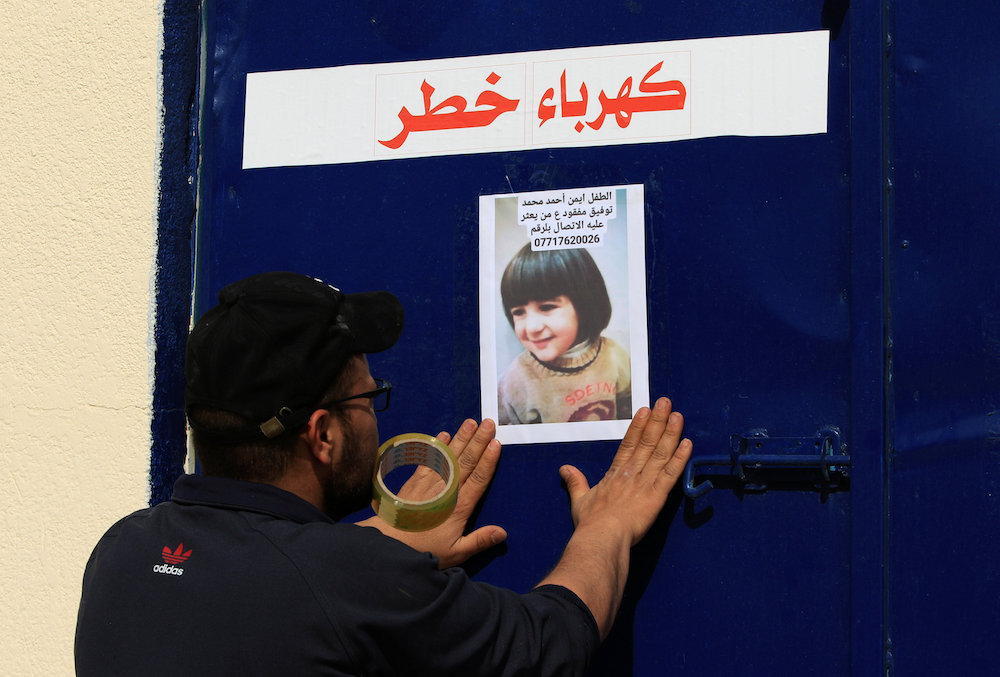MOSUL: The capsizing of a Tigris river ferry packed with families celebrating Kurdish New Year in Mosul left at least 100 people dead, mostly women and children, the Iraqi interior ministry said on Friday, as grief and anger swept the city.
Residents of Iraq's second city, scarred by years of extremist rule, demanded justice as Prime Minister Adel Abdel Mahdi decreed three days of national mourning following Thursday's accident.
Mosulites had resumed the annual festivities this year for the first time since Iraqi forces ousted Daesh following years of brutal extremist rule.
But the celebrations turned to tragedy when the overcrowded vessel ran into trouble as it headed to a popular picnic site across the river Tigris.
Mosul security officials blamed the accident on high water levels and overcrowding on the boat.
Hundreds of relatives of victims and residents gathered Friday at the scene of the accident, where prayers were held for the dead.

Mourners bury one of the victims who died after an overloaded ferry sank in Tigris river near Mosul, during his funeral at Mosul cemetery, Iraq March 22, 2019. (Reuters)
Many said the disaster could have been avoided, and chanted "corruption is killing us!"
"We want those responsible to be brought to justice," said Mohammed Adel, 27, whose father was among those who died.
He accused officials of failing to enforce safety standards.
Abu Salem, who lost his wife and two children in the accident which also coincided with mother's day in Iraq, pinned blame for the tragedy on profit motives and the corruption that is endemic in Iraq.
The managers of the picnic site were "criminals... I want them to pay up and I won't leave here until they do", the 50-year Iraqi said.

A man attaches a picture of a missing child on a door, after a ferry sank in the Tigris river, outside a morgue in Mosul. (Reuters)
Reflecting the popular mood, Grand Ayatollah Ali Sistani, spiritual leader of Iraq's Shiite Mulim majority, in his Friday sermon accused "the authorities in charge of supervision of not doing their job".
Transparency International ranks Iraq in 12th place in its list of the world's most corrupt countries.
Video footage from cameras at the picnic site, posted online, showed a severely overcrowded vessel beginning to list as water comes aboard.
As it capsizes completely, it traps dozens of people under its hull.
Authorities had warned people to be cautious after several days of heavy rains led to water being released through the Mosul dam, causing the river to rise.
Videos showed a fast-flowing, bloated river and dozens of people floating in the water or trying to swim around the partly submerged boat.
Abdel Mahdi said the justice system "must do its job and the investigation must produce results on the reasons for this shipwreck".
Scores of angry protesters swarmed President Barham Salih and Nineveh province governor Nawfal Hammadi Al-Sultan on Friday, forcing them to leave the site of the river ferry accident.
While war and extremist attacks have claimed hundreds of thousands of lives in Iraq in recent years, such accidents are relatively rare.
But corruption and the dismal state of public services in Iraq were triggers for widespread protests last year.
Daesh turned Mosul into its de facto capital after sweeping across much of the country's north in 2014.
The city spent three years under the group's iron-fisted rule until it was recaptured by Iraqi troops backed by a US-led coalition in 2017.
Survivors of Thursday's disaster were treated in hospitals heavily damaged by the months-long military campaign against the extremists.
A mortuary was receiving bodies wrapped in white shrouds, many bearing the names of women.
A forensics official said many had yet to be identified.
Iraq's justice ministry said it had ordered the arrest of nine ferry company officials and banned the owners of the vessel and the picnic site from leaving the country.
Officials implicated in various scandals have fled Iraq in recent years.






























